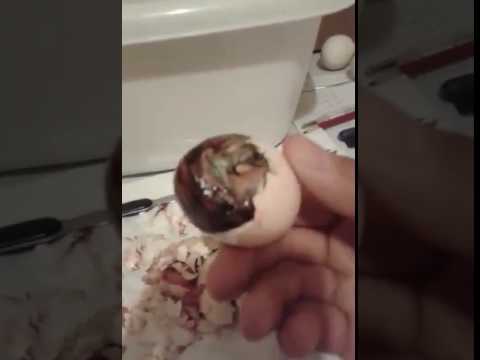Hoping for a little guidance of the signs that it may be time to help with a hatch.
I've read and reread Sally Sunshine's article https://www.backyardchickens.com/a/step-by-step-guide-to-assisted-hatching so I know first and foremost I should be patient. But I also know there can be a fine line between too soon and too late when you can't see what's going on in that shell.
I've got shipped eggs hatching right now. The first pipped last night 7ish at the wrong end. *sigh* During the 12 hours last night it has barely made the hole bigger but broke through the membrane. During the night 3 more pipped and the first has popped out at 8:00 am. Last night was Day 20/tonight Day 21 (set Friday eve 3 weeks ago). Using my Brinsea bator. Humidity great, etc.
Can someone who has been through this a few times share the signs when #1 may need help? Weak peeping? Loud cheeping? No progress after x number of hours? I was doing fine until the first popper. I swore I would keep my cool until this evening at the very least but would feel better if that logic was confirmed. If there is no more progress today, should I help tonight?
On a related side note: why do chicks that have ext pipped die in shell? I would have assumed once they can breath air that buys them a lot of time. But I have read many threads that discuss cases of pipped peeping chicks that people try to help a day or two later and the chick is already dead but appears normal. Any insight?
I've read and reread Sally Sunshine's article https://www.backyardchickens.com/a/step-by-step-guide-to-assisted-hatching so I know first and foremost I should be patient. But I also know there can be a fine line between too soon and too late when you can't see what's going on in that shell.
I've got shipped eggs hatching right now. The first pipped last night 7ish at the wrong end. *sigh* During the 12 hours last night it has barely made the hole bigger but broke through the membrane. During the night 3 more pipped and the first has popped out at 8:00 am. Last night was Day 20/tonight Day 21 (set Friday eve 3 weeks ago). Using my Brinsea bator. Humidity great, etc.
Can someone who has been through this a few times share the signs when #1 may need help? Weak peeping? Loud cheeping? No progress after x number of hours? I was doing fine until the first popper. I swore I would keep my cool until this evening at the very least but would feel better if that logic was confirmed. If there is no more progress today, should I help tonight?
On a related side note: why do chicks that have ext pipped die in shell? I would have assumed once they can breath air that buys them a lot of time. But I have read many threads that discuss cases of pipped peeping chicks that people try to help a day or two later and the chick is already dead but appears normal. Any insight?
Last edited:




